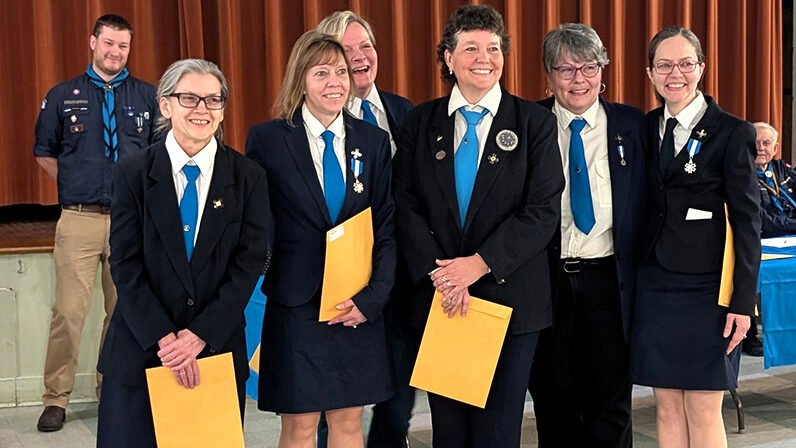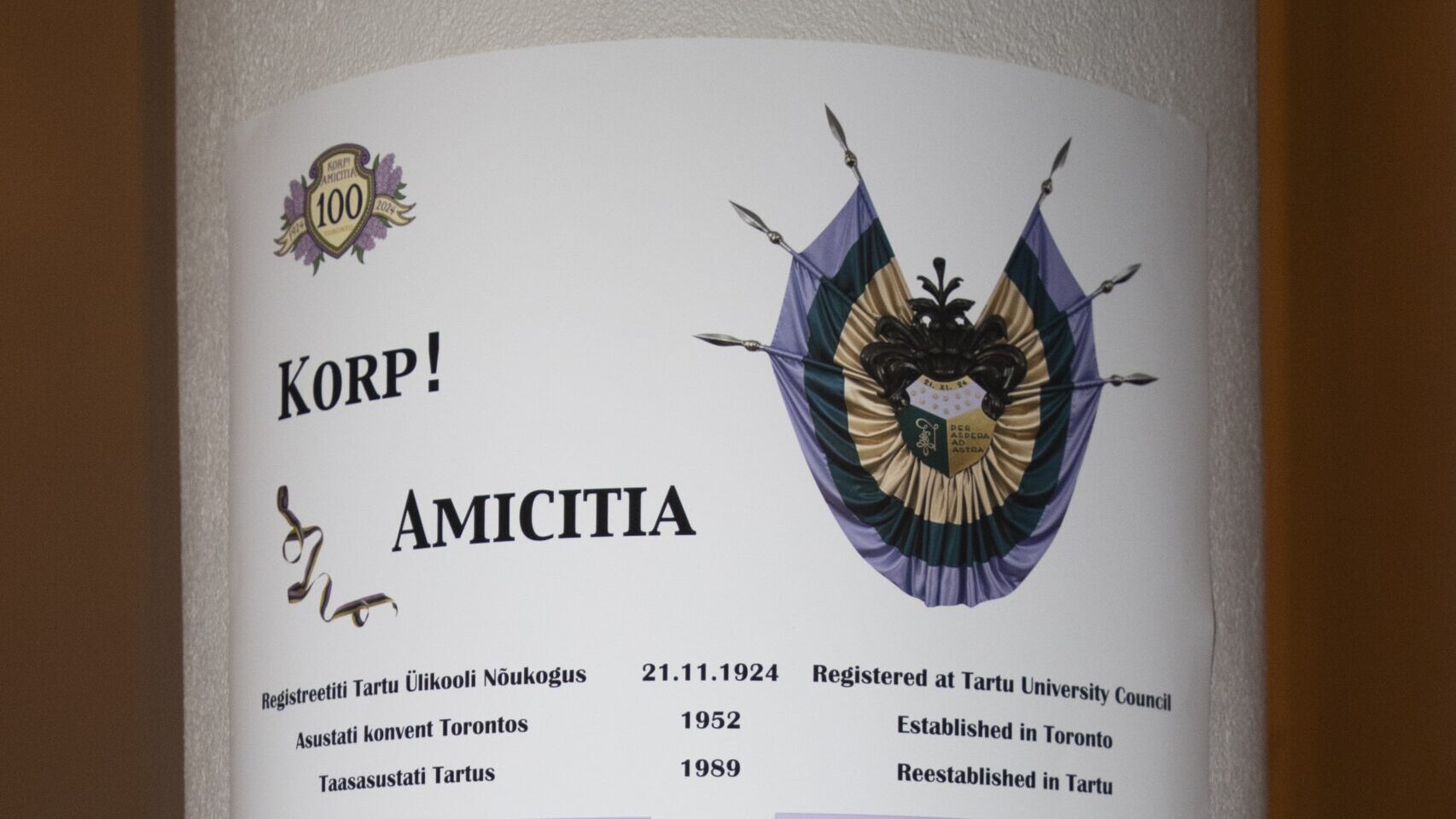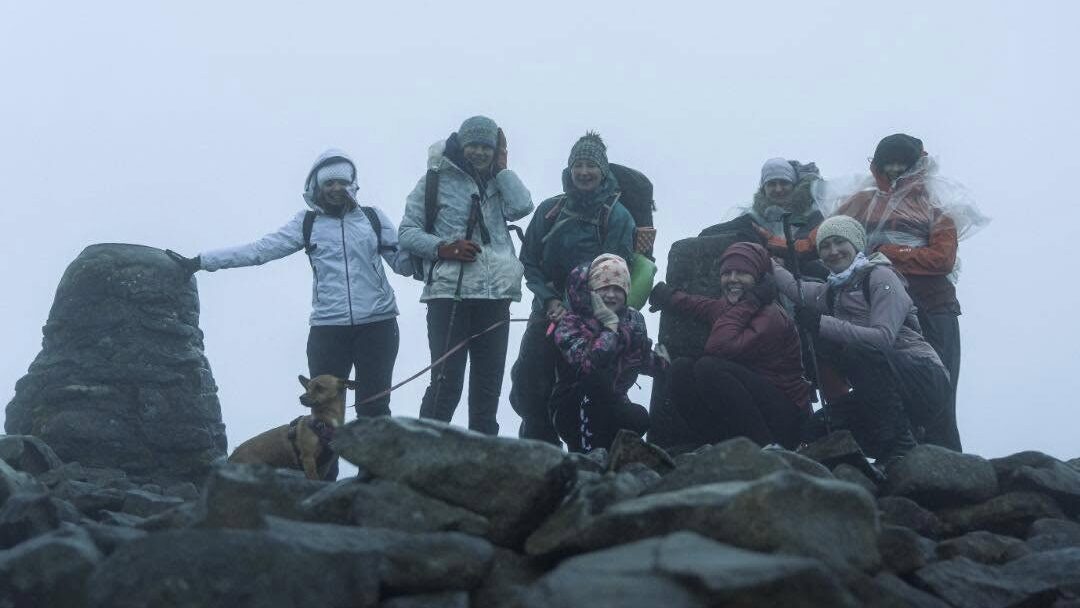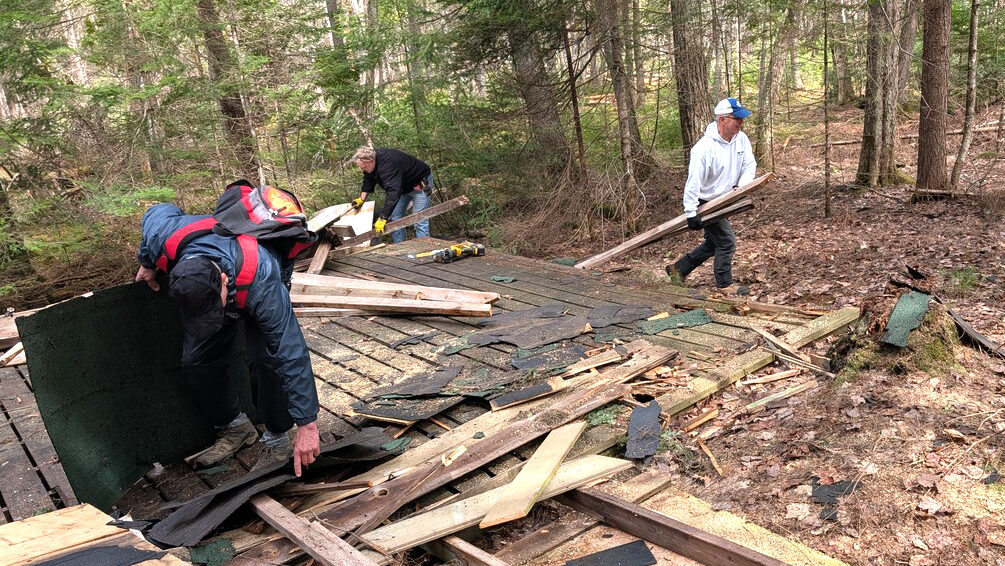The mixed use of the building would be viewed as a positive if activities were able to be isolated to the hall/room being used.
“Sign here”, oh, sorry, first let me brush off the paper
During my tenure at the Estonian Credit Union (“ECU”) as a teller during my university studies in pursuit of my accounting designation, weather forecasts sometimes played into my end of day procedures. If a storm was brewing we knew to clean off desks, and cover computer equipment with layers of plastic. Regardless of best preparations, we would return the following day to often find our desks awash with brown water. Everything was cleaned up before opening the doors to members, but the buckets to catch dripping water dotted the branch floor to prevent further damage to the floor below and from mold developing in the carpeting.
On Saturday mornings when the house is buzzing with activity, the entire ECU branch shakes. Kids should be able to run around and have all the fun in the world but that said, with debris falling from the ceiling due to the ruckus upstairs, a professional atmosphere when discussing members' personal financial concerns is challenging to maintain. This is especially the case when opening up accounts for new members. To them, I explained that the youth groups upstairs are having a good time, but go into any other successful, creditable credit union or bank, no one will ever have to laugh off the debris falling onto clients' banking papers with “kids will be kids”. I am not saying we should separate business activities from the community use as ECU operates for members of the community, but we should be able to provide our tenants and organizations with a building in which they can conduct activities in harmony, and minimize impact the other's operations.
“You didn't want reggae grooves at this funeral?”
I also worked many years downstairs in the café. Again, it was oftentimes a customer service nightmare. It was impossible to get the temperature to a comfortable setting. In the winter one of the solutions to avoid mourners at a wake in the café from sweltering in their already vulnerable state, was to turn off the heat to the entire house (and speaking from experience, the bank upstairs would get cold and space heaters would need to be brought out). Having a room full of people complaining about the heat and knowing there is nothing to be done was a feeling of powerlessness that as an employee just made you feel crappy. In the summer, the opposite problem required noisy portable air conditioners and dehumidifiers in each corner, and still not resulting in a comfortable setting. But climate control is not the only issue. Even by shutting the café doors (thereby compounding the temperature and compromised air circulation problem), the audio and vibration from events in other parts of the building, whether that be a soul music revival party in the large hall with loud bells rung while someone is giving a heartfelt eulogy downstairs or the ceiling of the café shaking ominously due to the dancing above, makes those at their event in the café feel like second class citizens.
Out of bandaids
All of our organizations and individuals can pay rent and use the building and are encouraged to do so at every turn – but why as a community do we think that offering outdated, inefficient and impractical space reflects who we are as a community? Why does it take 3 hours to set up audio/visual technology in the grand hall when the current standard is plug-and-play? Why do we have blue buckets dotting the floor when it rains? Why can a member of our community who relies on mobility assistance not access our consular offices that only have stairs leading to them? Why must a bride in her white gown navigate into the bowels of the building to where a wake is being held and share the washroom space with red-eyed mourners? Why do we feel that offering Class-C space for our own community is the way forward? When we have a viable opportunity on Madison to secure a Class-A “trophy” space that reflects our success as a community why apply bandaid after tattered bandaid at 958 Broadview?
Know your trends
This chart was presented at the March 29, 2017 Town Hall and excludes redevelopment expenses.
Net income of the Estonian House has been on a decline and it is operating in an ever-deepening loss position. The Estonian House, a not-for-profit organization, has over the past six years earned a total of $2,750 (excluding redevelopment costs), and this with significant subsidies to users by Eesti Sihtkapital and house repair contributions by the Estonian Credit Union to help keep Estonian House afloat. While the Estonian House operates on a not-for-profit basis, it has no capital reserves to pay for significant repairs. In 2016, Estonians share of large hall rental was 4%. Overall, use by Estonians is down by 45% over six years. The trends evidence the fact that our community is no longer willing to pay to use the house, such that it can remain viable.
While one set of individuals is desperate to stay, citing that they would not undertake an extra 15 minutes of car travel or 5 additional (or perhaps fewer) subway stops, we have an exponentially larger part of the community who no longer comes to the current Estonian House because they do not feel that it reflects who they are as Estonians. Seeing the use of hall rentals first hand, the trend in reality is celebrations are usually held at other locations, more somber occasions are more likely to be held at the Estonian House. – Why can't we have a building that is suitable for both?
Shareholder mandate has not changed – “Sell the house”, “we want something new”
In April 2012 the Estonian House shareholders approved, with 97.5% support, direction to the board to “solicit viable proposals for Estonian House 2 leveraging the value of our existing land asset”. That is what the Estonian House board has done: twice (January 2015 and September 2015), the board has tried to re-develop the property. I support the tireless efforts of the Board's Tulevik Committee in trying to meet the shareholders' request. Any claim to the contrary subscribes to “alternative fact” scenarios like those plaguing the United States. So I ask you stop blaming any of the individuals and organizations that are trying to solve the answer to the problem that we no longer use this house in a way that will keep it afloat. We have a viable proposal for an Estonian Centre on Madison. This development is entirely within our community's control. We are not under the control of third party developers who can hold our feet to the fire.
It is clear the community has supported this mandate, for individuals to say anything to the contrary I think is offensive and discrediting to the community.
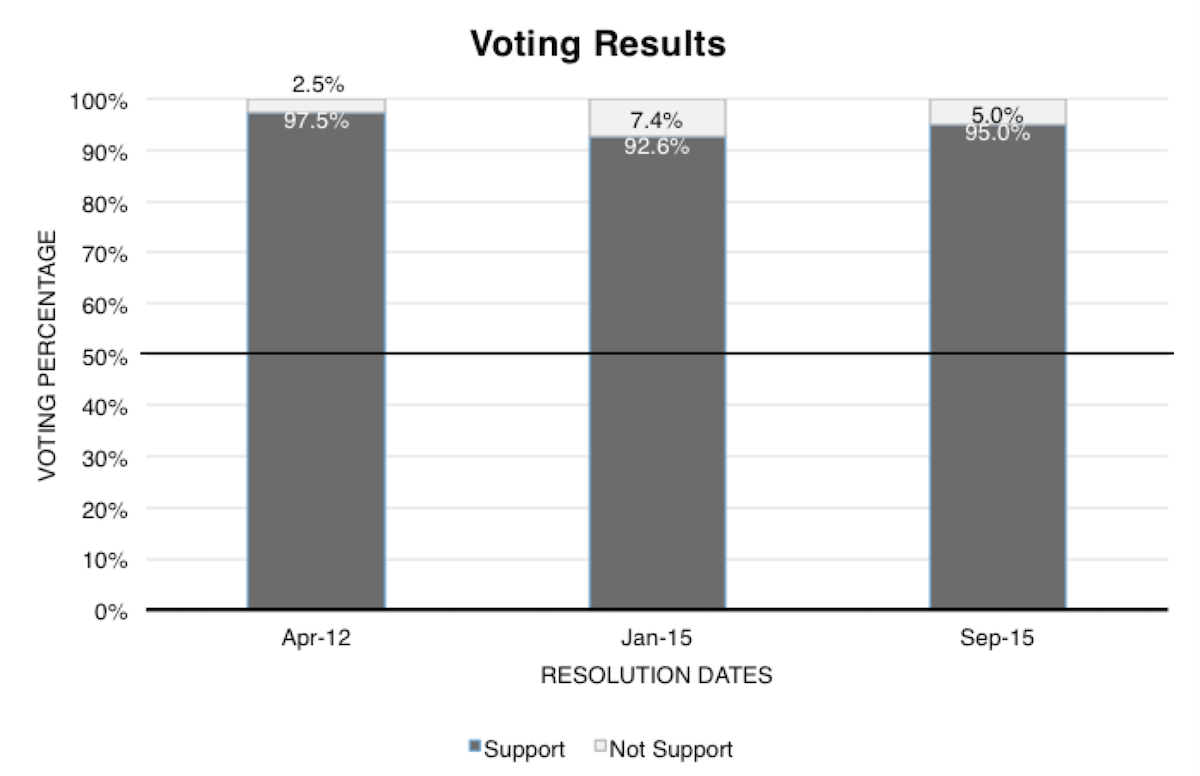
My take?
This brings me to the reasons why I joined the Estonian House board. When approached to join the board two years ago, I saw an opportunity to apply my accounting qualifications. I wanted to find a way to save the house we know today. I am, admittedly, a hopeless romantic and wanted to be able to show my children the house in which their parents met. Even with all the issues I knew about the building firsthand, a part of me held out hope that the Estonian House board missed something.
I sifted through the analysis done by qualified experts. I absorbed the vast amount of work that has gone into generating options. Reports by industry consultants and financial results year after year confirmed the same result. Our beloved Estonian House has operated and run its course. Its capital equipment is patched up by the best volunteers a community could ask for. However, patchwork is not sustainable. It addresses the immediate problem but not the long-term solution.
I studied accounting all through university, I have a specialist qualification in Accounting from the University of Toronto, I have my CPA designation with the Chartered Professional Accountants of Ontario, I have looked at the financial analysis and the impact the state of the building has on its viability. Further, the independent auditor has noted the risk that is faced with the continuing operations with no new development on the horizon.
I understand the history of the building and how it came to be. I understand the emotion for many who were directly involved with financially supporting and building the Estonian House when it was first acquired, but just because we move to a different location doesn't mean that the past will not be honoured and remembered. The Madison project hasn't proceeded to design details, but I just couldn't imagine there wouldn't be a homage to the past. If you talk to anyone who is driving this project the amount of pride each individual has about what our community has accomplished over the years is heartwarming. Pride is literally spewing out from any seam possible and the group of tireless volunteers leading this charge are not allowing the emotions they have in regards to the past blind them from the severity of our reality. This is a case of basic finance, and hopes of fundraising to the tune of millions of dollars to apply more temporary solutions to a fading building is no longer something our community should contemplate.
I for one have not lost any confidence in anyone who is or was on the Tulevik Committee, or is leading the Madison project. Looking at all the financial facts and reports, it's time the community embrace the future. When Estonia regained its independence it didn't try to go back and recreate the golden years before occupation – it picked itself up, brushed off the dirt, and bolted past many countries. We are all proud of the country that has produced Skype, Transferwise and at the same time maintains the glorious tradition of the Song Festival. That is how this Madison project needs to be viewed – a moving forward, appreciating the past because it propels us forward. Shouldn't the most vibrant Estonian community outside of Estonia embrace opportunity like Estonia did as opposed to clinging to a building?
Seeing the organizations and their representatives leading the charge, I for one have great confidence in them. The passion they have for ensuring our community has a viable place to keep thriving – there are no words to describe the gratitude I have for each one of them.
Sincerely,
Linda Veltmann, CPA, CA
P.S. I would like to end with a final plea – can we all just get along? Stop with the conspiracy theories, belief of hidden agendas, anonymous hateful commentary, and disrespect of all the volunteered time and work that has gone into looking at the feasible options for the future. – Speaking to other members of my peer group, it's these kind of things that make it difficult for the younger generations to want to get involved. No one wants to get involved with moving things forward because you have the minority of people who just attack everyone publically, and in often cases under “anonymous”. It really takes away from the younger generations desire to get involved. When you actually speak to a broader community you find there is a very large group that supports moving forward and still appreciating the past! We as a community need to start vocalizing positives as opposed to having all the nay sayer take the lime light!
1. My position as treasurer is due to my qualifications as a Chartered Professional Accountant (“CPA”). To quote CPA Canada, this body is the national organization established to support a unified Canadian accounting profession. It represents highly qualified professionals who demonstrate an ongoing commitment to providing the highest standards of accounting ethics and best business practices.
2. www.boma.org Click on “Building Class Definitions”.
3. 30% of the Estonian House is unrentable: this includes landings, hallways, foyers and mechanical and janitorial rooms. This percentage in the industry is 10-15%.

